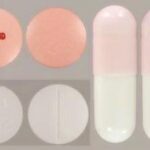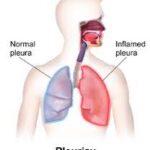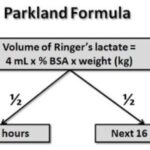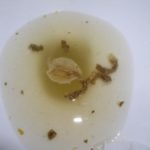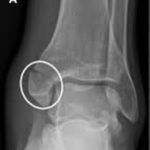What is Pompholyx?
Pompholyx is also known as vesicular endogenous eczema or dyshidrotic eczema. It is a form of skin disease that is characterized by the development of deep blisters on fingers, soles, and palms of the affected individual.
Pompholyx can be classified into two groups:
- Pedopompholyx (pompholyx affecting soles of the feet)
- Cheiropompholyx (pompholyx affecting palms of the hand)
It is more common in females than men and mostly affects young adults. In most instances, pompholyx disappears on its own within a matter of weeks. Recurrence is however common. In some cases the disease is continuous making treatment quite a challenge.

Causes
There are several factors that could lead to one getting pompholyx, and they include:
Palmoplantar hyperhidrosis:
This in simpler terms is excessive sweating. Flare ups of the condition are often reported during warm climates such as summer and spring or in warm climatic regions. People who experience excessive sweating also have a high chance of getting pompholyx.
Genetics:
50% of the people who get pompholyx have a family history of the disease or atopic eczema.
Stress:
Stress has been discovered to be a contributing factor in the acquisition of dyshidrotic eczema.
Fungal infections:
Whether on site (palms or toes) or far away like in between the toes. These are fungi that use keratin for growth and thus attack the skin, nails and hair of the affected persona.
Inflammatory dermatophyte infections are the major cause of Pompholyx. They include athlete’s foot, ringworm of the face, ringworm of the body, jock itch, ringworm of the hands, black dot ringworm, ringworm of the nails and ringworm of the scalp.
These fungal infections are passed through body contact of people, animals and soil organisms.
Friction:
Friction can lead to formation of deep seated blisters.
Reaction to drugs:
An adverse reaction to immunoglobulin therapy can result in pompholyx.
Contact with irritants:
Coming in contact with irritants like water, detergents, perfumes, cosmetics, shampoo, solvents, household chemicals and the likes can lead to one getting pompholyx.
Allergens:
Contact with allergens especially Nickel is a major red flag.
Signs and Symptoms
A person with pompholyx will show the following signs and symptoms:
- Intense itching of the skin on the fingers and hands
- Redness of the skin
- Deep blisters on the palms and fingers
- A burning sensation on the skin
- The skin on the palms and soles becomes dry and scaly
- In serious cases, the blisters spread to the back of the hand and feet
- Painful cracks on the palms and soles of the affected persona
- Pustules- these are blisters that secrete fluid
- Nail dystrophy – this means affected individuals have poor nail formation. Their nails are not properly attached to nail beds and eventually detach themselves. Their nails are discolored due to blood pools underneath and have pitted edges.
- Blisters that ooze pus or are covered in golden crust. This is in the case of secondary infection by bacteria (Streptococcus pyogenes and staphylococcus aureus). These bacteria cause further swelling and pain.
- Nail fold swelling – infection of the skin cuticle around toe and fingernails that results in swelling, pus, redness and pain.

Diagnosis
Diagnosis of dyshidrotic eczema is generally done through observation of clinical symptoms.
This is however not accurate since bullous impetigo, herpetic whitlow, bullous pemphigoid, pustular psoriasis, contact dermatitis and hand foot and mouth disease have similar clinical symptoms. For this reason, further testing in the lab is done.
In cases where the underlying cause of pompholyx is suspected to be fungal infections, skin is scraped for the purpose of mycology. If the physician suspects the causing factor is an allergen, patch testing is done to confirm. This is, however, done only in chronic cases.
A skin biopsy can also be done. This process involves administering of local anesthetic, removal of a skin sample for testing and dressing of the site where the skin was taken.
Treatment
Treatment can be quite difficult in recurrent cases. It is based on management of pompholyx causative factors.
The first thing to do is simply avoiding contact with irritants. Gloves can be used when the person wants to do unavoidable tasks like shampooing their hair or house cleaning.
Avoid contact with nickel and nickel coated items or any other allergen that might be causing or aggravating the pompholyx. Instead of using soaps, which leave the skin dry, emollients, commonly known as moisturizers, are recommended.
Other treatment options include the following:
- Placing cold packs on the affected area has been proven to provide relief
- Dermatophyte infections can be treated by administering of oral or topical anti-fungal agents
- Wet dressing – this involves dipping palms and soles in dilute potassium permanganate, acetic acid or Aluminum acetate for 10-15minutes twice in a day for about 5 days. This practice helps in drying blisters.
- Well-fitting footwear to minimize friction
- Wearing of socks, even two at night to minimize friction and for better absorbency of sweat
- Wearing of cotton lined gloves when sleeping to help absorb sweat
- Use of potent antiperspirants on the palms of the hands and soles of the feet before sleeping to help with excessive sweating
- A physician can drain blisters and pustules but never do it at home on your own
- Antibiotics are given to deal with bacterial infections. They are mostly taken orally
- Steroid creams can be used to help the skin in healing, to reduce inflammation and itching. These however can only be applied for a short time due to their adverse side effects
- Administration of antihistamines. These help to relieve itching which in some patients is so intense that they cannot sleep.
- Administration of steroid tablets
- Immunosuppressant creams like pimercrolimus and tacrolimus can be applied on blisters. They however can only be applied during the inflamed dry phase, on new blisters undergoing occlusion.
- Photo therapy is applied where the patient is exposed to ultraviolet light that is controlled
- Administration of Alitretinoin capsules. This is done when the eczema on the hands is extremely severe.
- Taking of immunosuppressant capsules – these work, as their name suggests, by suppressing the immune system thus slowing down severe eczema symptoms. They include methotrexate, Ciclosporin and Azathioprine. And as helpful as they are, there may be side effects like vomiting and stomach upsets to be expected.
- Patients with hyperhidrosis are given botilinum toxin injections
- Radiotherapy is also an option in the treatment of pompholyx.
Reference List
- Psoriasis. Available at http://www.webmd.com/skin-problems-and-treatments/psoriasis/understanding-psoriasis-basics#1
- Pompholyx. http://www.dermnetnz.org/topics/pompholyx/
- Pompholyx. http://www.nhs.uk/
- Treatment of Pompholyx. https://nationaleczema.org/eczema/treatment/immunosuppressants/

